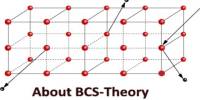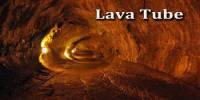Quantum physics has enabled various technological advancements, including computers, smartphones, and GPS. With the goal of creating extremely secure communication networks, it is already opening up new avenues of research in the science of cryptography.
The photons that contain the qubits or “quantum bits” (the information) vanish after traveling a few hundred kilometers inside an optical fiber. Therefore, they require “repeaters,” a type of “relay” that is partially based on a quantum memory.
A team from the University of Geneva (UNIGE) has achieved a world record and made significant progress toward the creation of long-distance quantum telecommunications networks by successfully storing a qubit in a crystal (a “memory”) for 20 milliseconds.
The npj Quantum Information journal publishes the results of this study. Quantum physics, which was created in the 20th century, has allowed scientists to explain the behavior of atoms and particles as well as some characteristics of electromagnetic radiation.
These theories created a real revolution in physics by defying conventional wisdom and introducing concepts that had no analog in the macroscopic world, such as superposition, which describes the possibility of a particle existing in multiple locations simultaneously, and entanglement, which describes the capacity of two particles to interact instantly even when separated (also known as “spooky action at a distance”).
Many studies in the field of cryptography, which combines methods for message encoding, are currently centered on quantum theories. When information (a qubit) is communicated between two interlocutors by a light particle (a photon) inside an optical cable, quantum theories provide for the guarantee of absolute authenticity and confidentiality. The superposition phenomenon informs the sender right away if the photon carrying the message has been tampered with.
We applied a small magnetic field of one-thousandth of a Tesla to the crystal and used dynamic decoupling methods, which consist in sending intense radio frequencies to the crystal. The effect of these techniques is to decouple the rare-earth ions from perturbations of the environment and increase the storage performance we have known until now by almost a factor of 40.
Antonio Ortu
Memorizing the signal
The loss of photons and signal disappearance beyond a few hundred kilometers is a significant barrier to the development of long-distance quantum communications systems.
The difficulty is to discover a mechanism to repeat the signal without changing it by developing “repeaters” based, in particular, on a quantum memory, as copying or amplifying the signal would cause it to lose the quantum state that ensures its anonymity.
A qubit carried by a photon may be stored in a crystal for 0.5 milliseconds in 2015 by a team led by senior lecturer Mikael Afzelius at the Department of Applied Physics at the Faculty of Science of the University of Geneva (UNIGE).
The photon was able to impart its quantum state to the crystal’s atoms through this mechanism before dissipating. The formation of a broader network of memories, a requirement for the advancement of long-distance quantum telecommunications, was not possible since the phenomena did not endure long enough.
Storage record
Today, Mikael Afzelius’ team has succeeded in greatly extending this lifetime by storing a qubit for 20 milliseconds within the framework of the European Quantum Flagship program.
“This is a world record for a quantum memory based on a solid-state system, in this case a crystal. We have even managed to reach the 100-millisecond mark with a small loss of fidelity,” enthuses the researcher.
The UNIGE researchers, as in their earlier study, used crystals doped with specific metals termed “rare earths” (in this case, europium), which can absorb light and then reemit it. Because beyond 10°C above this temperature, the thermal agitation of the crystal breaks the atoms’ entanglement, these crystals were maintained at -273,15°C (absolute zero).
“We applied a small magnetic field of one-thousandth of a Tesla to the crystal and used dynamic decoupling methods, which consist in sending intense radio frequencies to the crystal. The effect of these techniques is to decouple the rare-earth ions from perturbations of the environment and increase the storage performance we have known until now by almost a factor of 40,” explains Antonio Ortu, a post-doctoral fellow in the Department of Applied Physics at UNIGE.
The findings of this study represent a significant step forward in the creation of long-distance quantum telecommunications networks. A quantum state carried by a photon is now stored on a temporal scale that can be calculated by humans.
An efficient system in ten years
However, there are still several challenges to be met.
“The challenge now is to extend the storage time further. In theory, it would be enough to increase the duration of exposure of the crystal to radio frequencies, but for the time being, technical obstacles to their implementation over a longer period of time prevent us from going beyond 100 milliseconds. However, it is certain that these technical difficulties can be resolved,” says Mikael Afzelius.
The researchers will also need to figure out how to create memories that can store many photons at once in order to create “entangled” photons that will ensure confidentiality.
“The aim is to develop a system that performs well on all these points and that can be marketed within ten years,” concludes the researcher.
















